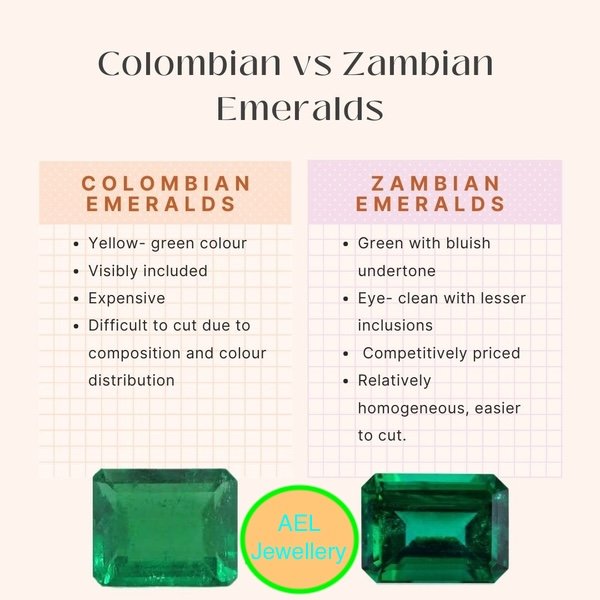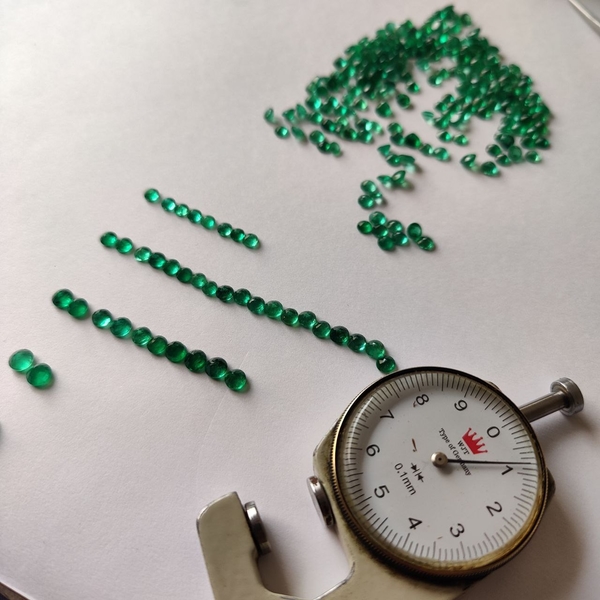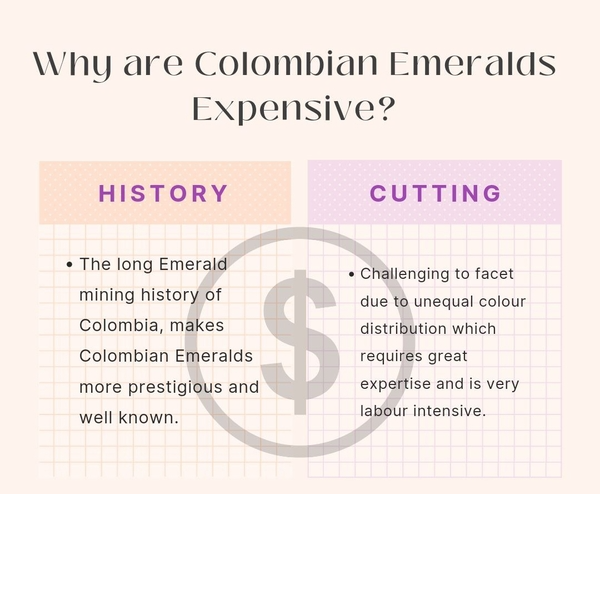
ALL YOU NEED TO KNOW ABOUT COLOMBIAN EMERALDS VS ZAMBIAN EMERALDS
Known for their high quality and beautiful bright colour, Colombian emeralds have always been known to be in steady demand. The novelty of Colombian emeralds is their origin and that their value has been constant with time. Most people know of only Colombian emeralds because of their perennial monopoly on the market, but there is more to emeralds than that, and they can be found in other places like Brazil, Ethiopia, or Zambia. Moreover, an emerald gemstone from Colombia is of a higher price than an emerald gemstone of similar quality and size sourced from another country. Today, Zambian emeralds are catching the eye of the top tier of designer for their stunning colour, clarity and most importantly, for being sustainably sourced. In this article, the world of Zambian emeralds will be explored in detail.

What are Zambian emeralds?
Zambian emeralds, one of the oldest emeralds on earth, have a brilliant bluish-green colour. They are made up of beryllium, chromium, and vanadium. This emerald goes back to being formed over 500 million years ago. Today, Zambian emeralds are slowly accounting for more sales in the emerald world; and one of the main reasons is their ethical sourcing.

The ethical sourcing of Zambian emeralds:
Over time, people have increasingly become more cautious and conscious of what their emerald’s origin is and what its environmental impact is. Being transparent about how sustainable the mine-to-market supply chain is, has become a priority. When buying Zambian emeralds, be it loose Zambian emeralds for sale or a Zambian emerald ring, their sustainable origins, starting from when it was dug up to how it was handled after that with ethical business practices, is made transparently traceable. Zambia has become the second-largest producer of emeralds in the world. Kagem emerald mine in Zambia is known to be the world’s single largest producing emerald mine. Everything, including protecting the workers, controlling illegal mining, and taking care of the environment surrounding the mines, is taken into consideration. Zambia is now producing over 20% of emeralds in the world.

Government incentives to small scale miners:
The Zambian government has taken many positive steps to encourage small scale emrald mining. The government’s grant of 50 million kwacha (approximately $3.8 million) was distributed between 400 small emerald miners, whose mineral exploration licenses were dormant due to lack of funds. Another positive step was the allocation of a part of the auction funds to conservation efforts like the Zambian Carnivore Programme.
What are the differences between Colombian and Zambian emeralds?
One of the key differences to note when comparing Zambian emeralds vs Colombian emeralds is the colour. Zambian emeralds have a bluish tint that adds a depth to them. It’s the iron in it that makes it possible. Chromium, iron, and beryllium make the unique green possible. The iron content in Zambian emeralds also makes the gemstone have a stronger structure. Since Zambian emeralds have fewer inclusions, their clarity is higher in comparison to Colombian emeralds.

While Zambian emeralds vs Colombian emeralds comes downgree to personal preference, many gravitate towards the darker shade and higher lustre in Zambian emeralds. The lesser number of inclusions helps in reflecting light better thus enhancing the bluish-green hue. One can go for loose Zambian emeralds if the preference is to finely examine the emerald gemstone in its glory, or one can opt for a Zambia.

Zambian emeralds vs Teal sapphires:
Zambian emeralds are a strong competitor to other green gemstones like green sapphires. They are less brittle in comparison to emeralds found in other parts of the world. Zambian emeralds rank between 7.5 and 8 on the Mohs scale of hardness, coming very close to sapphires that score a 9. Sapphires that are green in colour like teal sapphires, while beautiful, are quite rare with limited supplies. In comparison to green sapphires, emeralds have a stronger and bolder green hue. While teal sapphires can have the classically majestic blue-green combination, if one gravitates towards purer single-tones, emeralds are the way to go. It should be understood here that, Zambian emeralds, even with their darker undertones, do not posses the dichroism of teal sapphires, which look different in different lighting conditions. Thus bicolour sapphires, like teal and parti sapphires have carved a separate niche of their own apart from the classical Big Three of Ruby, Emerald and Sapphires.

Celebrities showcasing beautiful Zambian emeralds:
Zambian emeralds are increasingly getting popular with celebrities, for example, in 2016’s Golden Globe Awards, Taraji P. Henson dazzled in a 107-carat Zambian emerald gemstone earrings, and in 2019, Mahershala Ali wore a Zambian emerald signet ring. In 2020, at the Green Carpet Fashion Awards, Ellie Goulding wore a dress that featured over 150 Zambian emeralds.


With more and more designers embracing Zambian emeralds, be it for their stunning colour or ethical sourcing, it is important to note that, not just white diamond alternatives are picking on the market. The wide color array available with colored gemstones is increasingly becoming popular with today’s buyer.

Why are Zambian emeralds so competitively priced?
The curiosity behind “why are Zambian emeralds so cheap” is understandable. While one of the reasons why Colombian emeralds are the highest in demand is because of their rich history, it is because of that same reason why Colombian emerald prices are high. They go back to 300 AD whereas Zambian emeralds were not commercially mined until the 1970s. Natural Emerald deposits were found in the 1920s, but the 1970s was when they were mined. The added historical factor marks up the price of Colombian emeralds primarily. However, this is a good opportunity of gemstone wholesellers to invest in Zambian emeralds. Investment grade Zambian emeralds will make up an important part of your inventory with nature-inspired jewellery and colors picking up on the consumer market.

Conclusion:
In today’s rapidly changing market, it is important to keep our options open. While Colombian emeralds have worked well, it is important to find, alternative, sustainable sources that can meet future demands, without creating conflict and/or irreversibly damaging the local environment, economy, and culture. With Zambian emeralds, this is not the only advantage but also the fact that they are genuinely beautiful. It is advised to wholesalers and jewellers to tap into its potential now than when it becomes a rarity, making it more expensive. It’s always best to understand and invest in the value of something in the present when it has so evidently and repeatedly proven itself to be worth it.



